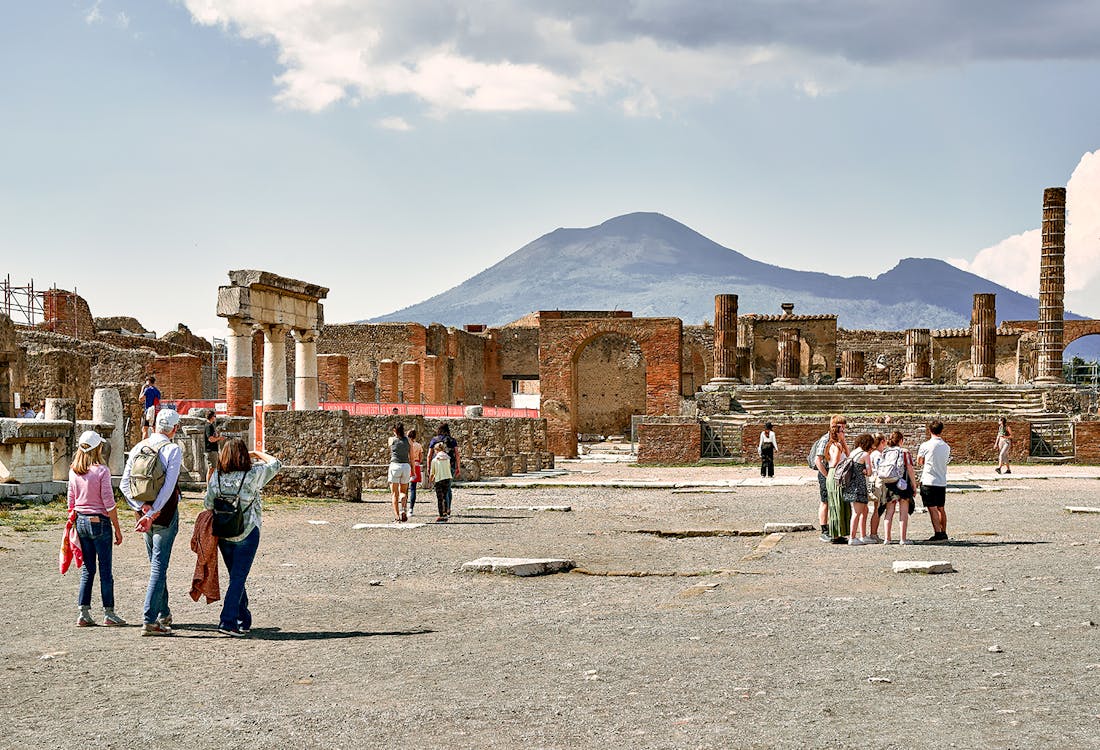Pompeii, a city frozen in time, has provided archaeologists with invaluable insights into urban planning and daily life over 2,000 years ago. When Mount Vesuvius erupted, it showed no mercy, burying the city under a thick layer of volcanic ash. Today, you can visit Pompeii and glimpse Roman life as it existed just moments before the disaster.
What are the ruins of Pompeii?

Although the site was known locally, the modern rediscovery of Pompeii began in the 16th century, when architect Domenico Fontana uncovered ancient structures while digging for an aqueduct. Your point is correct in spirit, though the formal identification and large-scale excavations came a bit later.
By the 17th century the true nature of the buried city was recognised, and by the mid-18th century systematic excavations set in motion the revelation that an entire Roman urban settlement had been hidden beneath volcanic material.
What the ruins reveal
Because of this preservation, archaeologists and historians have been able to reconstruct how Romans lived: how they organised their city, how they socialised, ate, worked and decorated their homes.
- Grand public buildings like temples, amphitheatres, forums, baths and shops.
- Private homes, many richly decorated with frescoes, mosaics and intricate ornamentation.
- Streets paved with large stones, showing deep ruts left by chariot wheels
- The preserved remains of people and animals caught in the eruption: ash-filled casts capturing their final moments.
The city’s layout is also strikingly intact: its massive walls once enclosed about 163 acres (66 hectares), pierced by several gates and criss-crossed by major roads such as the famous Via Stabiana and Via dell’Abbondanza.
Interesting facts about the Pompeii ruins
- The preserved graffiti across Pompeii’s walls give a rare glimpse into everyday Roman humour, politics and social life; for example, inscriptions calling for votes for local magistrates or cheeky love-notes scribbled in taverns give us a vibrant sense of street-culture.
- One of the largest outdoor amphitheatres in the Roman world stands in Pompeii – the Amphitheatre of Pompeii in Regio II, measuring about 135 m by 104 m and seating up to 20,000 people, where beyond gladiator shows also poetry, theatrical performances and political gatherings likely took place.
- The famous plaster casts of victims were created by pouring plaster into voids left in the ash when bodies decomposed. The casts revealed hauntingly detailed human forms frozen in their final moments of panic or despair.
- The sophisticated plumbing and water-systems of Pompeii rivalled its time’s best: the aqueduct system (branch of the Aqua Augusta/Serino network) fed the city’s “castellum aquae” reservoir at about 42-43 m elevation, whence lead pipes brought water to public fountains, baths and wealthy homes.
- The ruins contain stark evidence of a city disrupted in one instant. You’ll find shops left unlocked, food on tables and valuables abandoned.
- Unusual everyday-artifacts bring daily life in Pompeii into focus: for example, graffiti naming gladiators, preserved bread loaves in ovens, and even a barbershop with razors and combs.
Top Pompeii Ruins tour you can take

